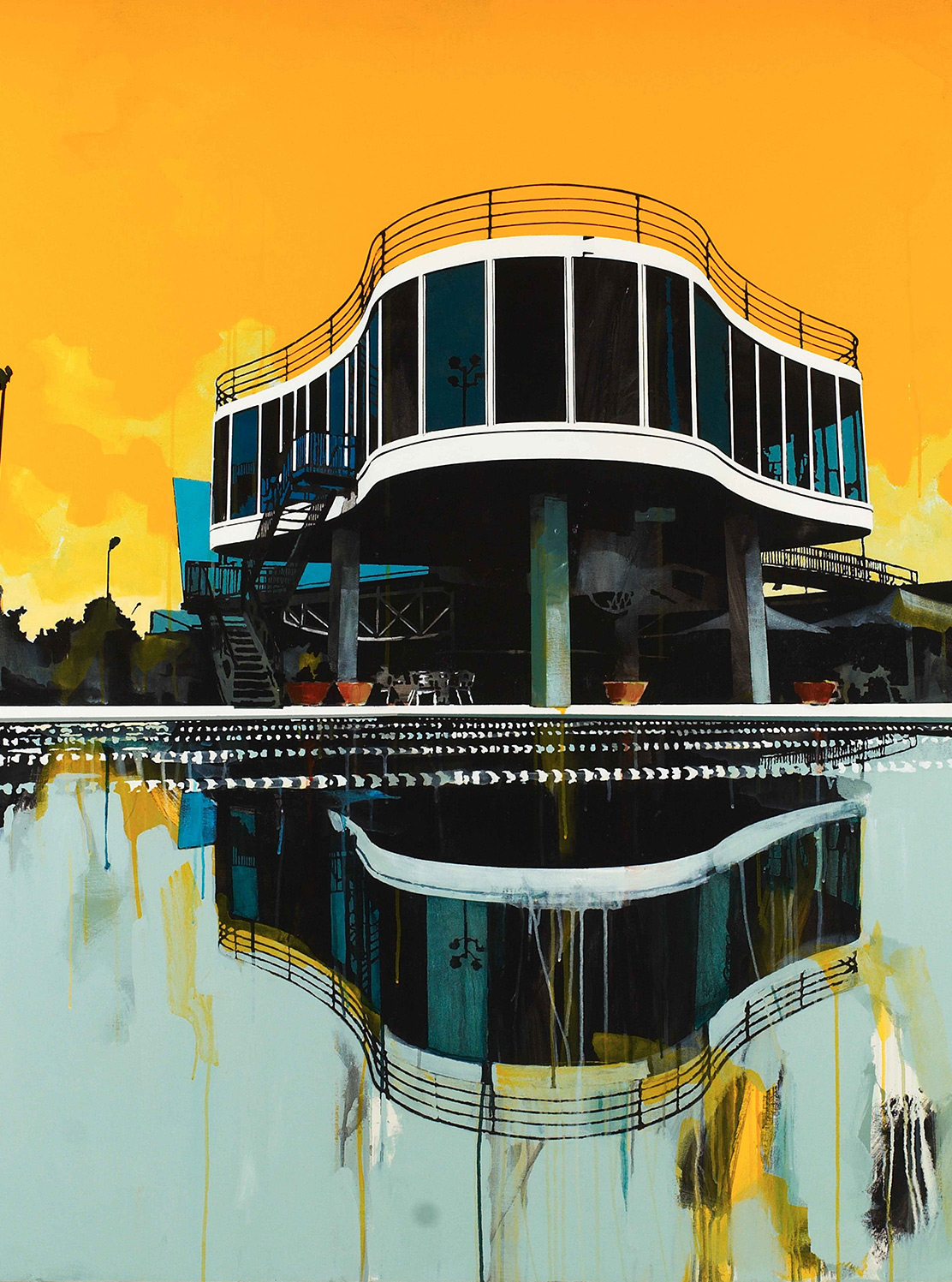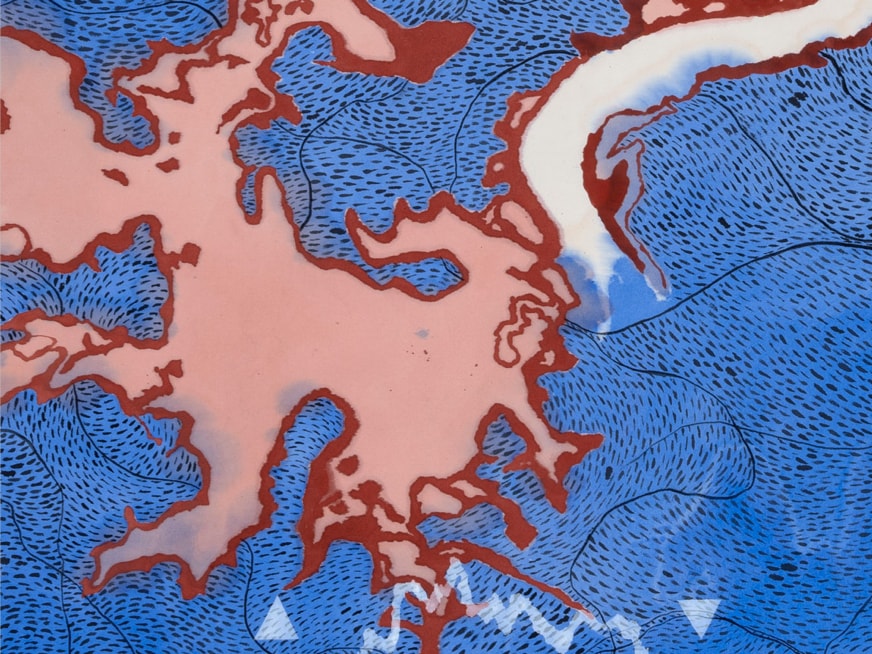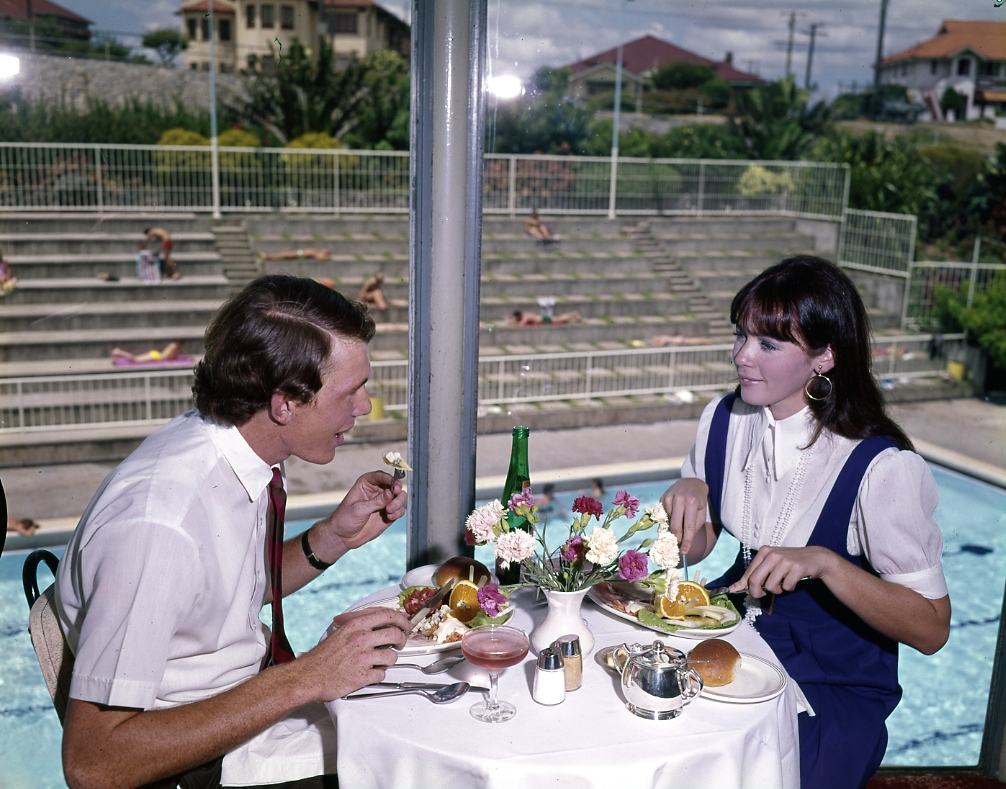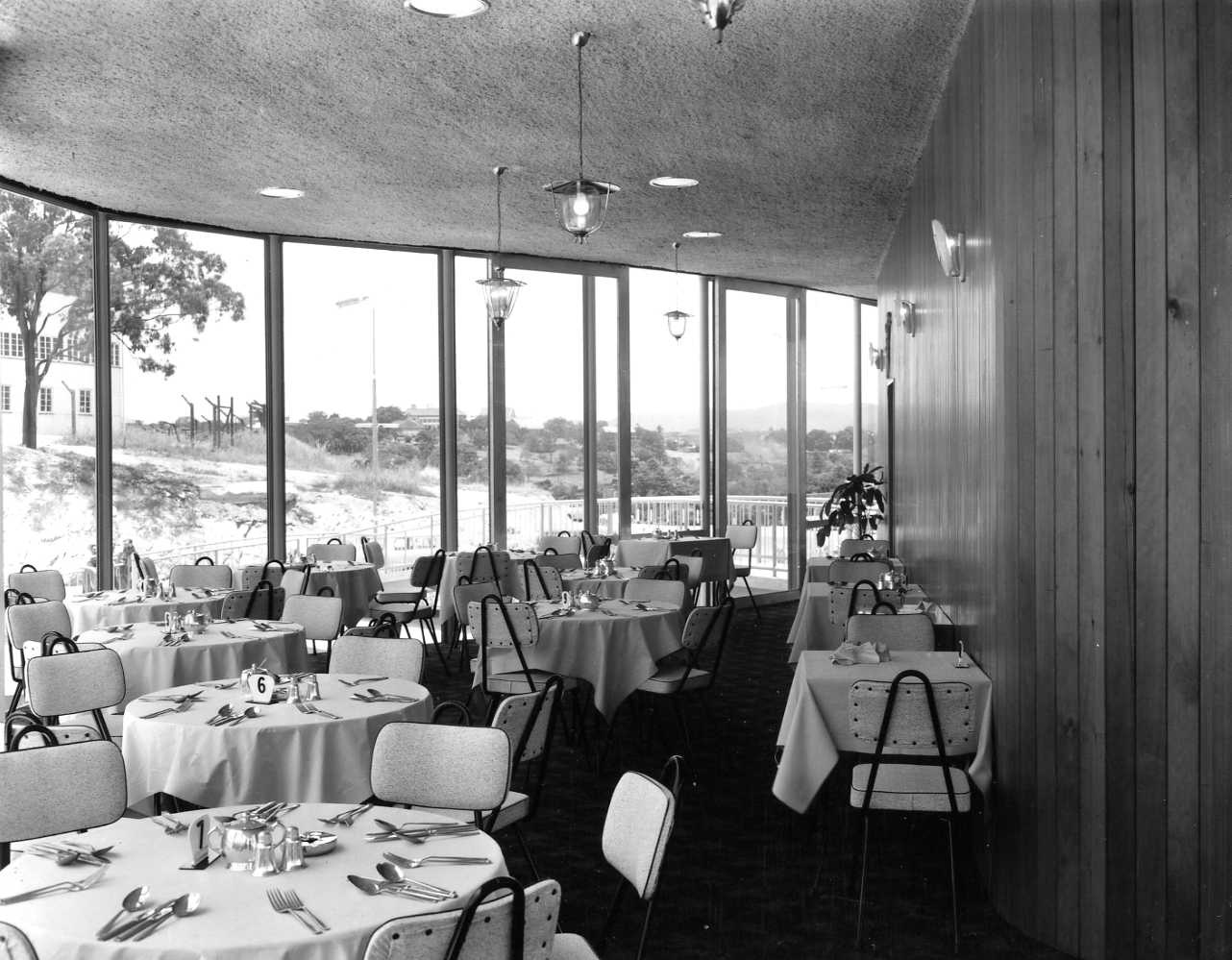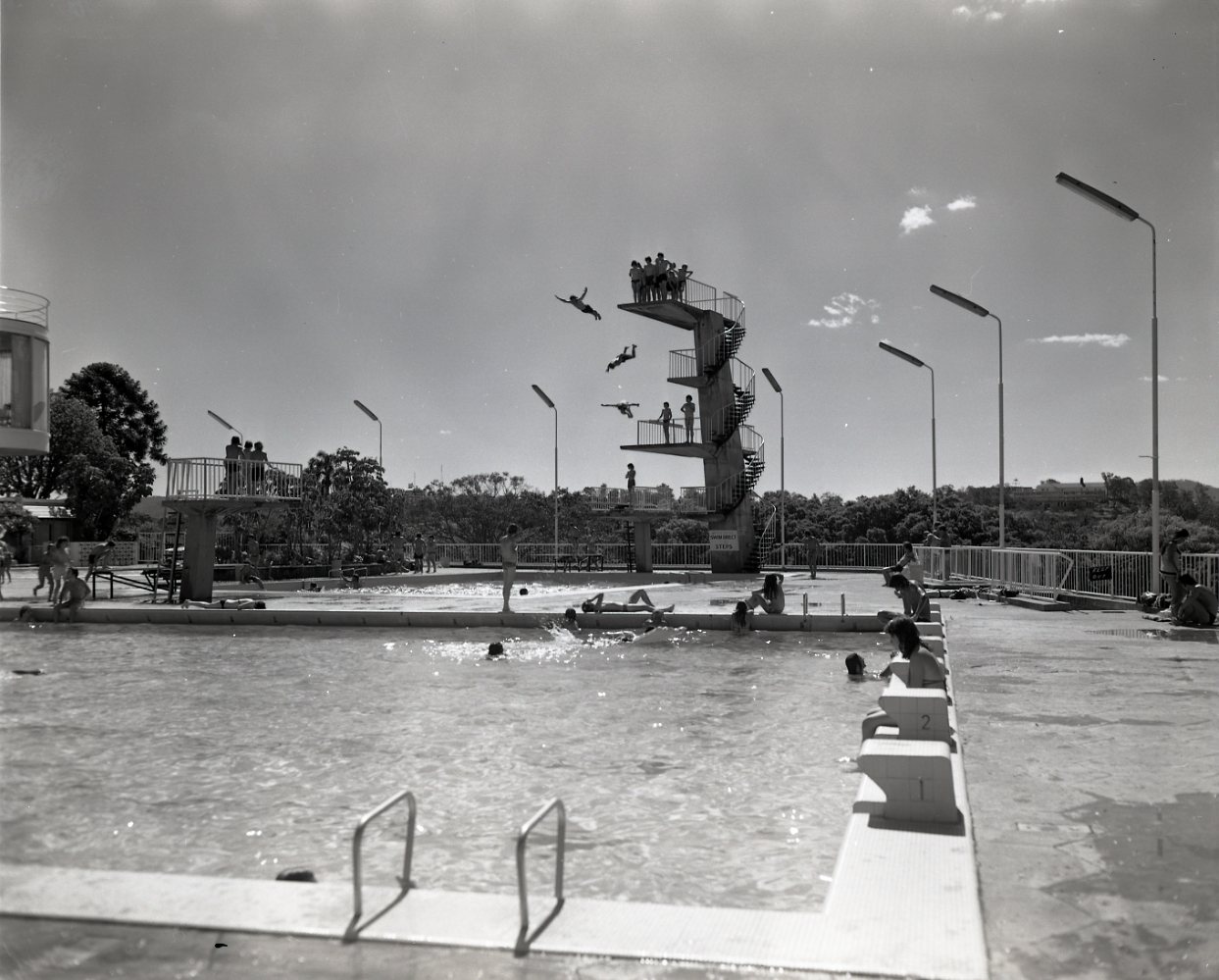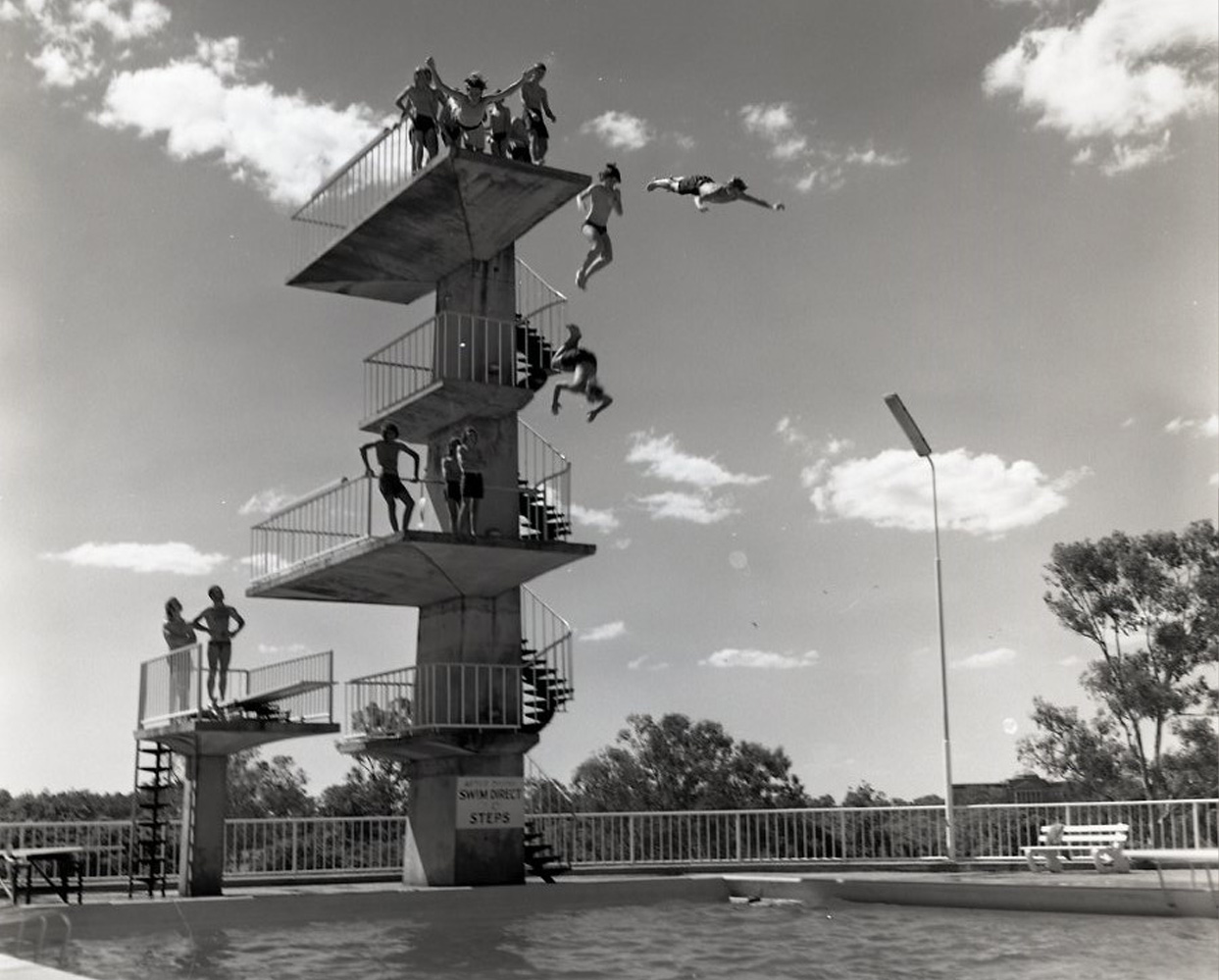Built to celebrate 100 years of local government in Brisbane, Centenary Pool is also an emblem of the city’s love of the water.
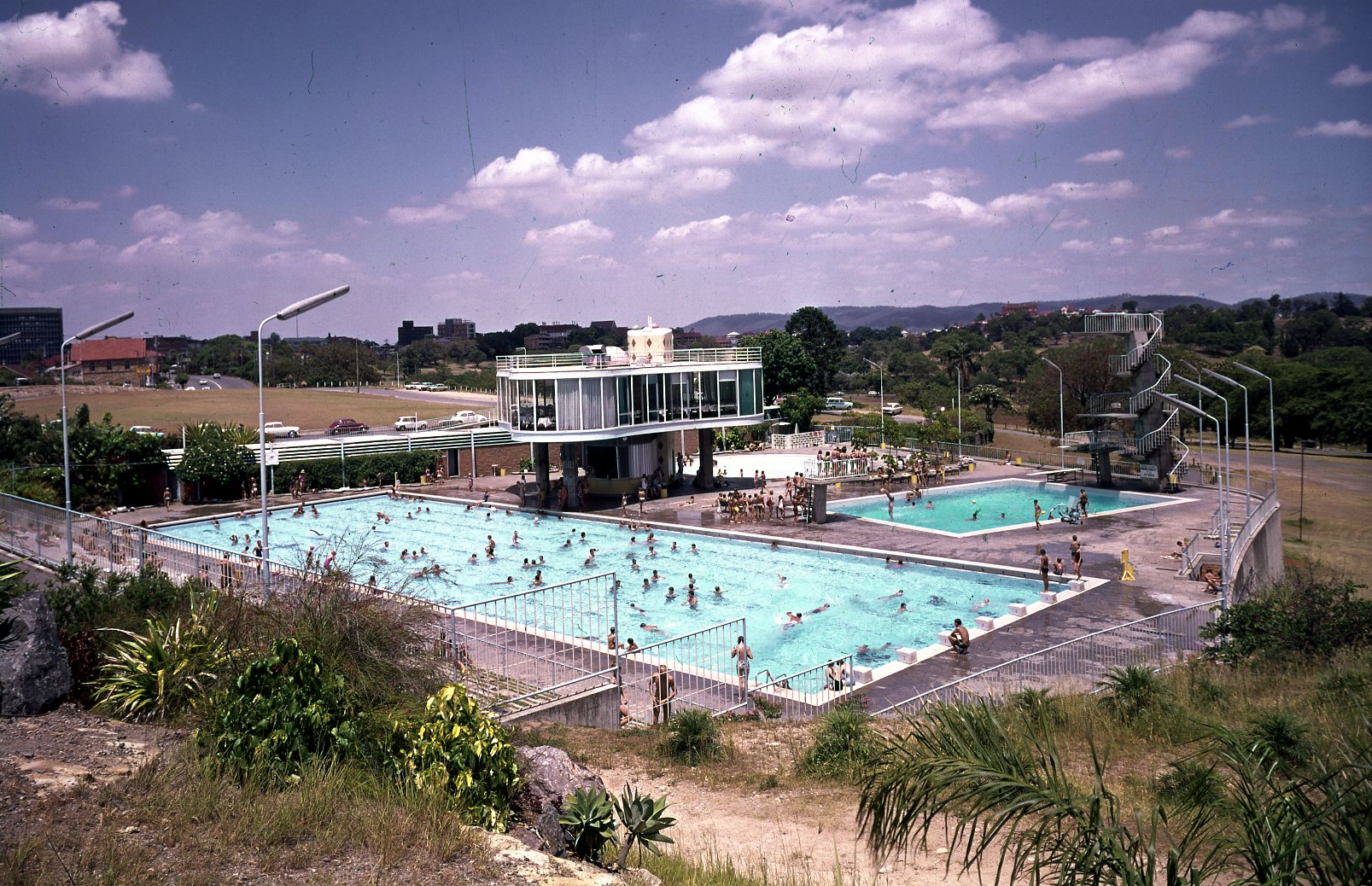
Designed by prominent Brisbane City architect James Birrell and completed in 1959, the Centenary Pool complex in Spring Hill is distinguished by its elevated, sleekly curved kiosk. The complex was Brisbane City Council’s main contribution to the celebrations marking 100 years of local government in Brisbane – proclaimed a city in October 1859 – and was chosen to reflect the public’s growing passion for competitive swimming. Now on the Queensland Heritage Register, until the 1980s Centenary Pool was the principal competitive swimming venue in Brisbane.
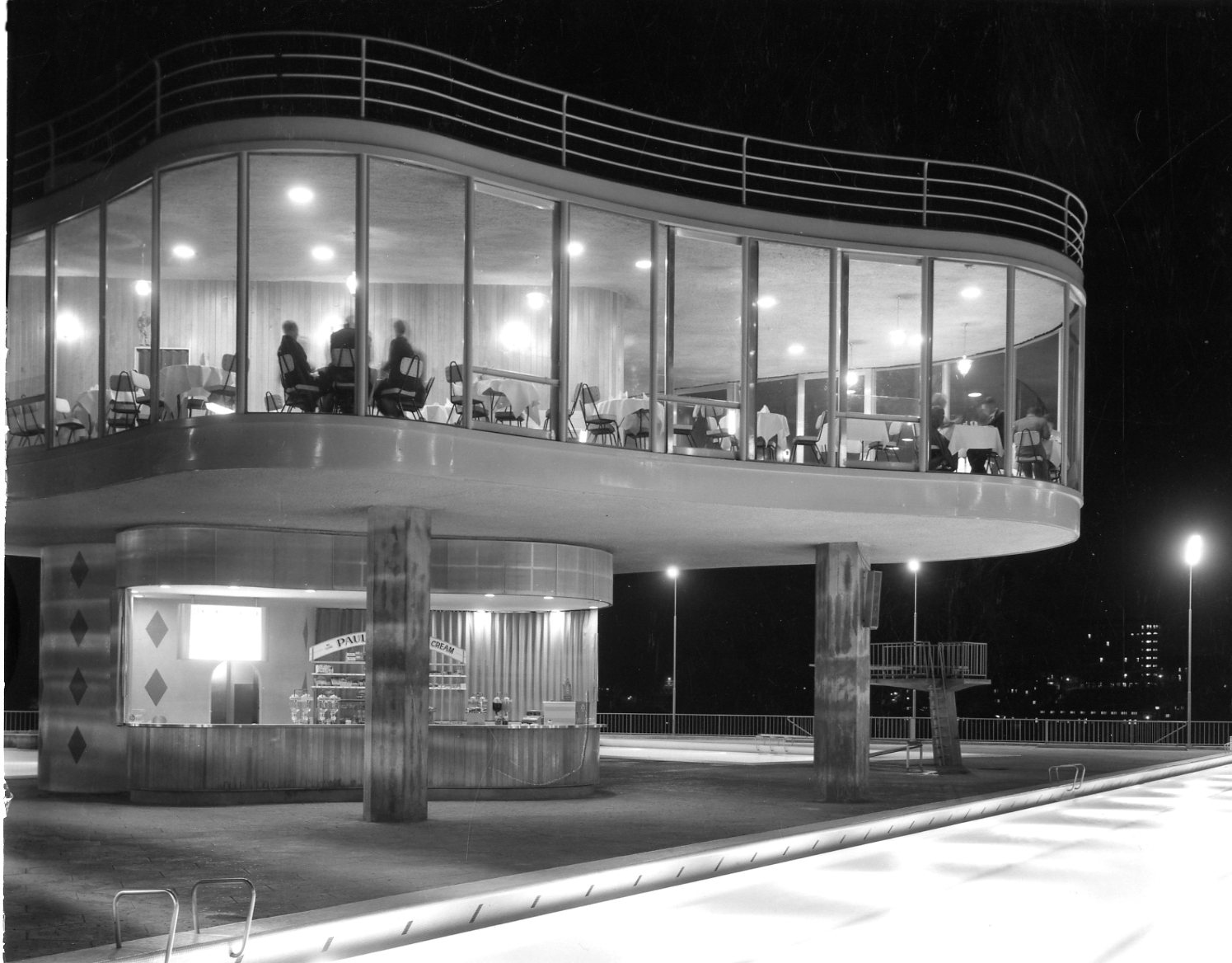
The 1956 Olympics were held in Melbourne and Australia’s athletes felt the home-ground love, producing the country’s best performance with 13 gold medals, 8 of which were in swimming events. Inspired by their Olympic heroes, Australians took to the pool. In the ten years following the Melbourne Olympics, Brisbane City Council built seven new public swimming pools to meet the overwhelming demand to dive in. Centenary Pool was the city’s first Olympic standard pool and diving complex and included a wading pool to encourage kids to start swimming at an earlier age. Work on the impressive complex commenced in 1957.
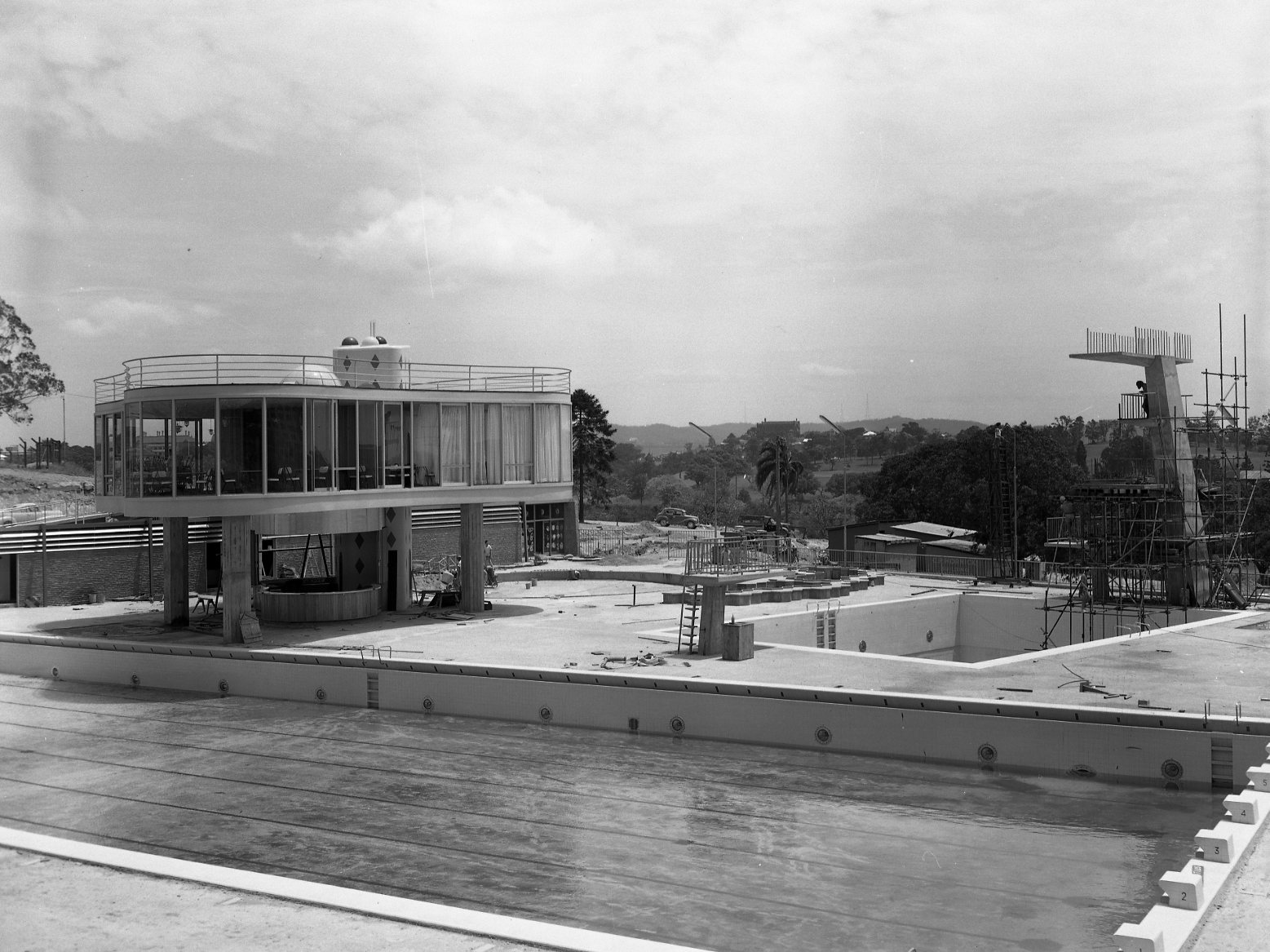
James Birrell was responsible for a substantial number of civic projects during his time as Brisbane’s City Architect (1955-1961). Birrell did not shy away from the weird and wonderful, nor the new and never-before-seen (in Brisbane) and delighted in bringing exciting new architectural trends to life in the city. His significant Centenary Pool complex departs from the angular style of architecture that was popular in Australia at the time, bearing more relationship to the curvaceous contemporary buildings of the Brazilian architect Oscar Niemeyer. Not only is it practical and functional, but with its iconic, wavy-walled restaurant and spiral diving tower the pool complex is visually exciting and distinctive, too.
To achieve the curved shape of the restaurant walls, Birrell called upon local engineers and shipbuilders Evans Deakin to craft the top and bottom beams of the restaurant; local steel fabricators, Sargeants, were employed to shape the winding steel core of the diving tower. No bell or whistle was spared in this design, which included underwater floodlighting and observation windows for underwater views. The complex was completed in November 1959 at a cost of approximately £150,000 and was officially opened by Governor of Queensland, Sir Henry Abel Smith on the evening of 25 November, during which the popular Governor was treated to a diving display.
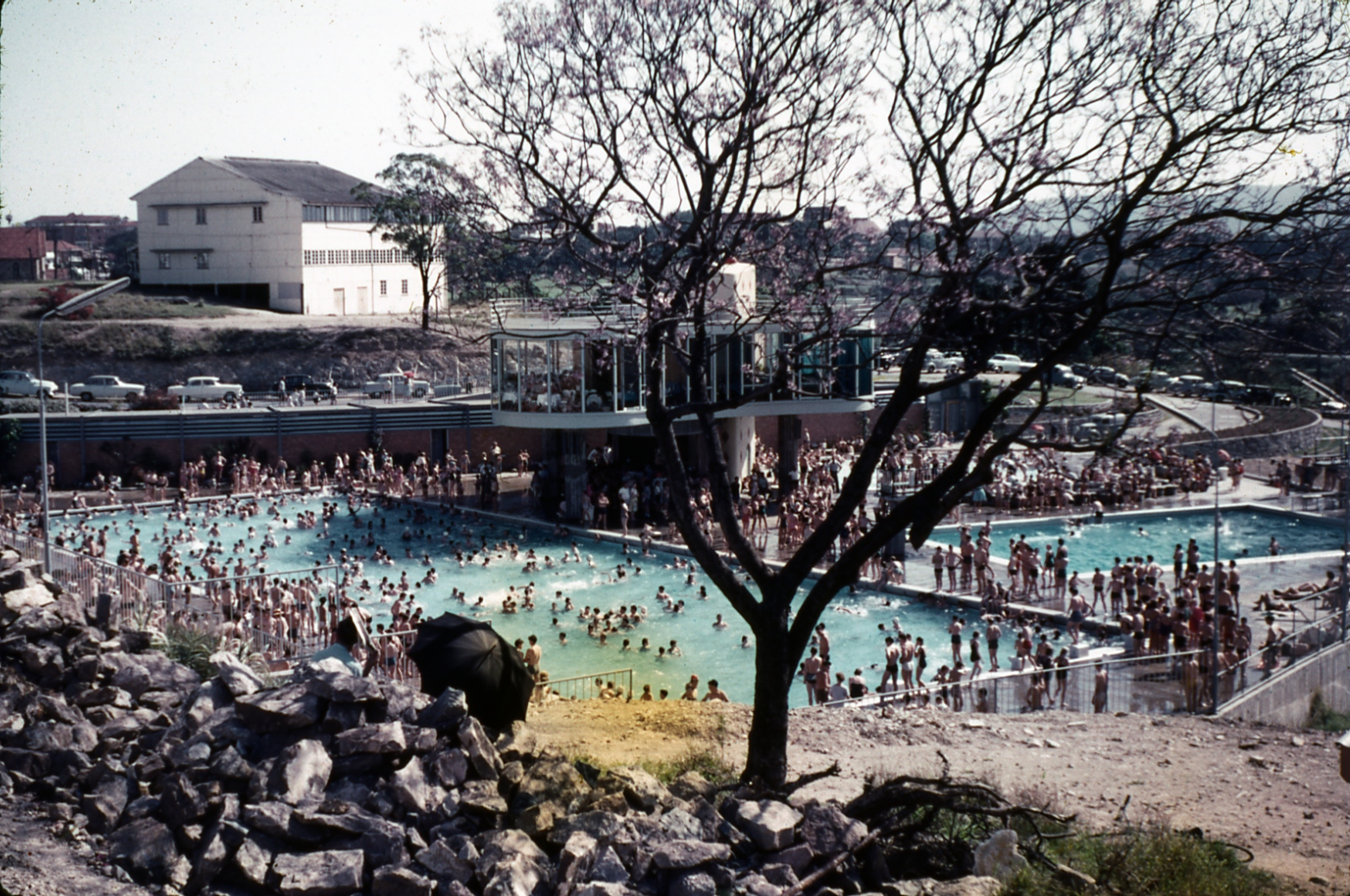
Birrell’s artistry was recognised when the Centenary Pool complex was selected by the editors of the Melbourne publication Architecture and Arts as one of the top ten buildings in Australia for 1960. The accolades continued the following year when the complex was the sole Queensland entry in the 1961 publication, New Buildings in the Commonwealth. Artist Paul Davies depicts the architecture of the pool complex in his painting Centenary Pool Brisbane, Yellow/Grey (2008). The painting corresponds to West Coast American modernist style, further suggesting the influence of global design movements on Brisbane from the mid-20th century.
However sophisticated its design and inventive its detailing, the Centenary Pool complex is an enduring emblem of Brisbane’s fondness for swimming, community and cooling off. Visit Museum of Brisbane’s exhibition Making Place: 100 Views of Brisbane to enjoy Paul Davies’s depiction of this iconic part of Brisbane heritage and explore other structures of social and architectural importance.
